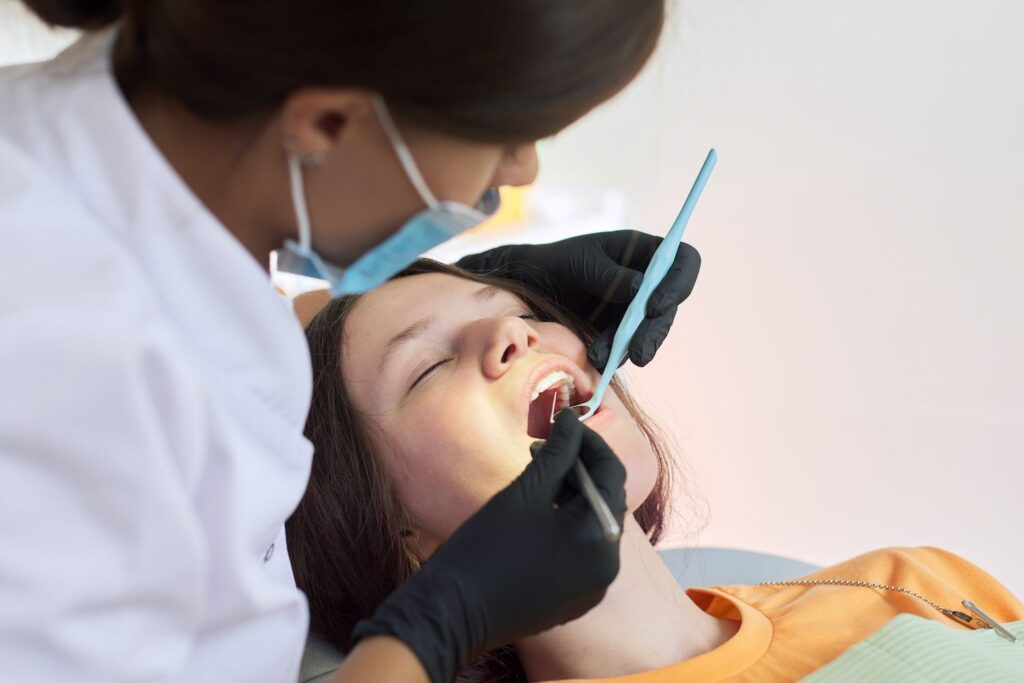The jaw is a crucial part of our facial anatomy. Yet, it is more than just a tool for chewing. It plays a pivotal role in our overall health. It influences various functions, including speech, facial aesthetics, and the respiratory system. Because your jaw connects to your airway, there is a connection between your jaw and sleep apnea.

The Mandible
The mandible, or lower jaw, is the movable bone forming the lower part of the skull. Connected to the skull by the temporomandibular joint (TMJ), the mandible allows for essential activities, such as talking and chewing. An imbalance or dysfunction in the TMJ can have effects on the surrounding structures, potentially impacting sleep.
The Temporomandibular Joint (TMJ)
The TMJ acts as a hinge, allowing the movement of the jaw. It connects the lower jaw to the temporal bone of the skull. It is also responsible for the smooth coordination required during activities like speaking and eating. When the TMJ is disrupted, it can lead to pain, stiffness, and even contribute to sleep disturbances.
The Airway
While the jaw and TMJ are essential, the airway completes the trio in influencing sleep apnea. The airway is the passage through which air travels during breathing. Any obstruction or restriction in this pathway can result in sleep-disordered breathing. This means that sleep apnea is a notable concern.
Sleep Apnea: A Breathing Disruption
Sleep apnea is a sleep disorder that creates pauses in breathing or shallow breaths during sleep. It can be obstructive, where the airway is blocked. On the other hand, it can be central, where the brain fails to send the proper signals for breathing.
The intricate relationship between the jaw and airway becomes evident when considering the role of the tongue, soft palate, and other structures. They allow for unobstructed airflow if there are no issues.
Impact of Jaw Position on Airway
The position of the jaw can significantly influence the openness of the airway. When the jaw is misaligned or positioned in a way that restricts airflow, it can lead to obstructive sleep apnea. Certain dental conditions may worsen airway obstruction during sleep, leading to recurrent breathing interruptions.
Jaw, Airway, and Sleep Apnea
TMJ disorders can also disturb sleep patterns. The discomfort associated with TMJ disorders may lead to difficulties falling asleep, frequent awakenings, or even bruxism (teeth grinding) during sleep. These factors contribute to the complex relationship between jaw health and sleep quality.
The Role of Dentistry in Sleep Apnea
Dentistry emerges as a significant player in managing sleep apnea. Oral appliances can aid in maintaining an open airway during sleep. These reposition the jaw and tongue to open the airway. These devices are often for mild to moderate obstructive sleep apnea cases. They provide a non-invasive alternative to continuous positive airway pressure (CPAP) machines.
Orthodontic treatments not only aim to enhance the aesthetics of your smile but also play a role in optimizing jaw and airway function. Orthodontic interventions can address issues that may contribute to sleep apnea.
